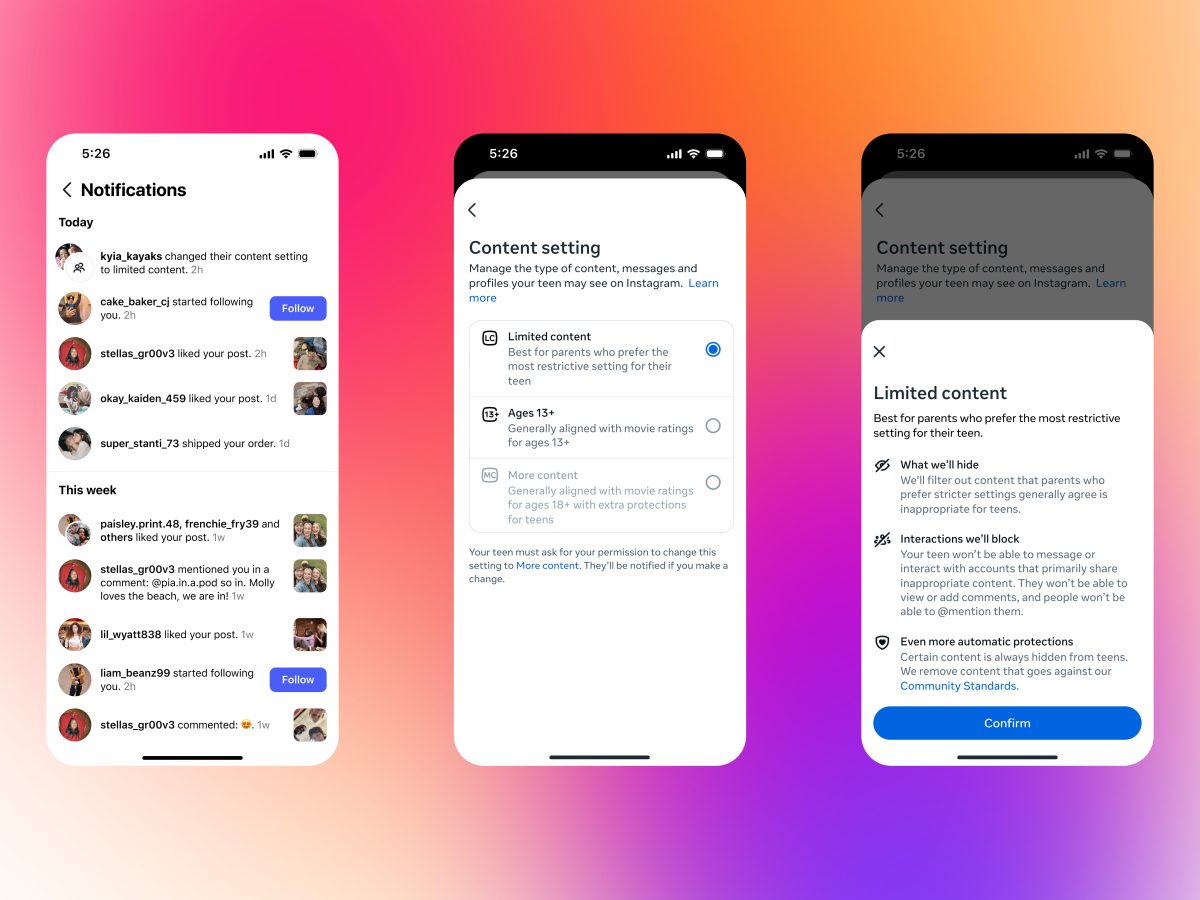
Last year, Instagram introduced Teen Accounts, a new way for teenagers to explore the app while keeping parents reassured that their kids were seeing age-appropriate content. The idea was simple: offer teens the chance to connect, create, and discover while automatically limiting exposure to harmful or adult material. From the start, these accounts included built-in protections, controlling who could contact teens, what content they would see, and even how much time they spent on the app. The response has been overwhelmingly positive. 97 percent of teens ages 13 to 15 kept the default restrictions on, and nearly all parents surveyed found the system helpful.
Building on that foundation, Instagram is now rolling out its biggest update to Teen Accounts since they launched. The goal is to make the platform even safer and easier to understand for families, while maintaining the sense of exploration teens enjoy. At the heart of this update is a framework guided by PG-13 movie ratings. Teens will now see content similar to what they might encounter in a PG-13 film. It’s not about shielding them completely from the world, but about providing content that feels age-appropriate and manageable. Teens under 18 will be automatically placed in this setting, and they cannot opt out without parental permission.
Instagram also recognizes that every family is different, so the platform is introducing a stricter option for parents called Limited Content. This setting filters even more content, removes the ability for teens to see or leave comments, and starting next year, will further restrict AI interactions. It gives families an extra layer of control for teens who may need a more protected experience.
To make sure these updates truly meet parents’ expectations, Instagram invited thousands of parents worldwide to review content and provide feedback. More than three million ratings helped shape the guidelines, ensuring they align with what parents consider appropriate. Parents will continue to have ways to share feedback, including reporting posts they think teens shouldn’t see. If a post isn’t already restricted, it will be sent to Instagram’s teams for review, and parents will be informed of the outcome.
The update also expands protections across the app. Teens will no longer be able to follow accounts that regularly share adult content, and if they already follow these accounts, they won’t see their posts or comments. Search results and recommendations will be filtered to remove age-inappropriate content, and even AI features will be guided by PG-13 standards to avoid giving teens responses that feel too mature. The aim is to create a consistent, safe experience across Feed, Stories, Reels, Explore, and direct messaging.
These changes are rolling out gradually in the US, UK, Australia, and Canada, with a full rollout expected by the end of the year. Instagram plans to expand the protections globally, including additional measures for teens who may misstate their age. While no system is perfect, the update reflects Instagram’s ongoing effort to balance teen safety with freedom to explore, giving families clarity, reassurance, and tools to shape their teen’s experience in a thoughtful, intentional way.